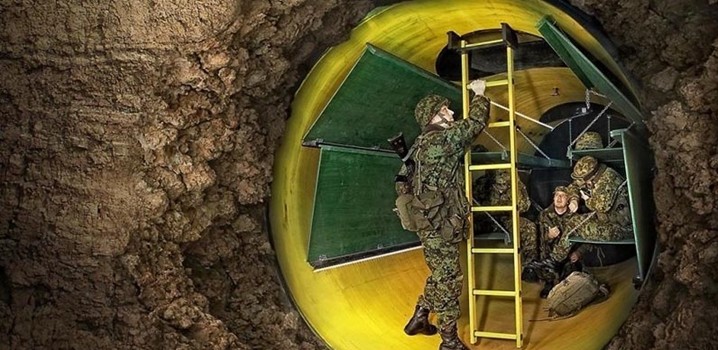As Russia pursues its latest foreign policy move with a military deployment to Syria, defense company Terramil in Russia’s neighboring Estonia has developed a product that answers the anxieties faced by people in the region with a next-generation bomb shelter. The modular design of interlocking tubes is also seeing interest buyers within Saudi Arabia, Egypt, India, and Pakistan.
Titled the Sub Safe U1, installation requires simply digging a trench and dropping in the tube. If installed to the design’s specifications with six feet of earth above the shelter’s roof, it is capable of withstanding an impact from a 155 millimeter artillery shell. Mainly geared towards military buyers, the company’s product catalog listed the shelter alongside machine gun nests and anti-tank mines. Unique to the polyethylene shelter is its 100% waterproof rating, which is not possible with shelters built of concrete or steel.
Grate floors line the bottom of the tubes, and a basic shelter that sleeps 12 is currently priced at $20,000. For $40,000 there is a shower unit option. Drawings of a more functional underground city model included kitchen, storage, and refrigeration modules. Per Terramil’s website, the shelter is usable in temperatures ranging from -176 up to 140 degrees Fahrenheit, and can be installed within ninety minutes per module.
In the U.S., a niche of survivalists who foresee a future resembling the film Mad Max are often referred to as “doomsday preppers,” but it looks as if the phenomenon will only continue to grow as world events worsen. It can be hoped that as in the aftermath of the Cold War, these shelters will instead be turned into wine cellars and storage areas, having seen no action in their intended role.
Terramil has already completed testing of the shelter against artillery, and plans for further testing in collaboration with the Tapa military base for its performance as an air-raid shelter.
Stay Connected